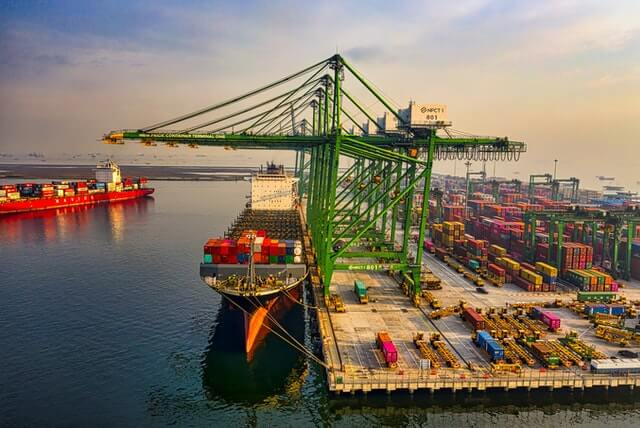At present, shippers and forwarders are struggling with the effects of the accumulation of events since last Chinese New Year.
Outbound freight rates from the far east are breaking historical levels with Asia-Europe spot rates exploding upwards of 10,000 USD market-high rates.
These freight rates on transpacific routes have quadrupled from this time last year. And these rates do not include the added port congestion and equipment surcharges and premiums for guaranteed loading.
With never-before-seen highs in container spot rates, container carriers and their pricing behaviour is being closely examined.
Sea Intelligence has observed that, “carriers in their pricing behaviour have prioritised short-term profitability over customer relationships.” Shippers with low-value commodities are forcefully getting priced out of the market. From the start of 2020 to present, for cargo with a value of 10,000 USD, spot rates have gone from being 30% of cargo value to being 80% of cargo value.

Turbulence is going beyond supply chains and making its way into the core of operations.
Industrial production in the US and Europe is taking a hit as they deal with supply bottlenecks due to delayed delivery times. Furthermore, the consumer and health-care sectors are suffering from a lack of available shipping containers to ship components and finished products out of China and Asia’s other major exporters.
Nearly three dozen container ships are anchored waiting for berth space at ports of Los Angeles and Long Beach. An increase from about 20 vessels just before Christmas. According to Blommberg, most shipping analysts see the congestion lasting through the first quarter, with the possibility of longer-term economic costs.
“The world needs the equivalent of 500,000 more 20-foot containers to satisfy the current demand” estimates Nerijus Poskus, vice president for global ocean at Flexport. He also expects the cost of shipping to “only increase in 2021.”
Manufacturers are already dealing with restrained output or left stranded with unpaid goods, making a mess of their inventories and cash flows. In some cases, factories are unable to take on new orders until the backlog clears up. Now add in the higher transport costs, as they’ll get incorporated into annual contracts with carriers which are due to be negotiated soon.
No immediate relief is expected after Chinese New Year ends.
Chinese New Year usually marks a seasonal turn in Asian exports, as many importers and forwarders renegotiate freight rates with carriers for their new 12 month contracts. Carriers also start to receive the tens of thousands of new containers from last year’s orders.
Normally container freight rates reduce by 15% to 20% after Chinese New Year, however it may not be the case this year due to the heavy backlog. Volumes that should have shipped last year in Q2, got pushed to Q4 and the ecommerce boom only exacerbates the situation.

Elevated container rates “may factor in for the rest of the year,” even if the current disruptions get ironed out, said Chris Rogers, lead trade analyst for S&P Global Market Intelligence’s Panjiva. “Companies that have seen much higher shipping costs are either going to have to swallow that in their profits or pass it through to their customers.”
The market may somewhat calm down after Chinese New Year, but it seems quite clear that it won’t go back to “normal” conditions or the level it was at this time last year. Some suspect that it should start stabilizing and slowly start trending down in terms of rate prices and equipment/space constraints as no blank sailings have been announced.
Shippers and forwarders can plan for uncertainty.
Shippers can take note from Mark Tritton, the chief executive of Bed Bath & Beyond Inc.: “We know that the freight pressure across retail is here to stay and we’ve built that into our future plans.”
Demand is currently high enough to justify continued sailings, but anything can happen. Just in case, it might be a good idea to prepare your supply chain for the possibility of carriers announcing blank sailings spontaneously.
Predict volumes as precisely as you can and book now for spring. Consider that capacity is reserved for weeks in advance. Carriers are also denying some requests to book. Already there is no guarantee of space for spring deliveries. Plus ships could reroute with little notice, resulting in delays.

In terms of forecasting, shorter-term forecasts make more sense this year. Consider playing out different forecast outcomes and the various supply chain impacts. Proactively brainstorm solutions to the various worst-case scenarios. You might also want to try delaying your RFQs/tenders if possible, otherwise it will be a very expensive 2021. If you can, extend your contracts to work with your 2020 rates and delay your tenders, or procure on a quarterly or bi-annual basis instead of yearly.
Collect and keep record of as much data as possible. Carriers do hold pricing power at the moment, but keep in mind that companies can begin negotiating for other value adds when spot rates lower. While this may be later in spring, any data you can collect through Chinese New Year could contribute to bases for negotiation.
It could also help to join an expert freight forwarder network in order to get better rates through an economies-of-scale approach and access to other cost saving benefits. Learn more about how 7ConNetwork can assit you through this volatile period.